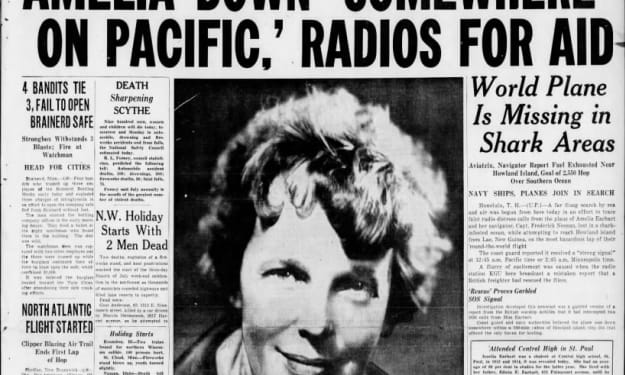The Scarlet Stage: Behind the Curtains of 'Pagtangis ng mga Aninong Umiindak sa Hangin'
A Short Film Review
As every person grows up, each of them have their own set of dreams that they look forward to, so they do their best in order to fulfill those dreams. Young Amalia also had a dream of her own. Her passion for dancing led her to a goal of becoming a performer and showcase her talent on big stages. However, someone’s dreams may also be forgotten, may it be because they have already fulfilled it or they managed to make a new one for themselves. It is the same case for Amalia, as her dream when she was younger became a blurry memory to her, not because she fulfilled it or she had another, but because this dream of hers became her own nightmare.
'Pagtangis ng mga Aninong Umiindak sa Hangin' (Cry of the Dancing Shadows in the Wind) written and directed by Laurence Llamas released in 2023 is an award-winning short film about Amalia and his grandson Manuel, wherein Manuel opened a memory of Amalia that he should not have. A simple question about the dreams of the past resurfaced a whole lot of sufferings and torments she wished she had never experienced. This masterpiece of Llamas greatly depicts the atrocities experienced by the Martial Law victims during the regime of Marcos Sr. Victims, who despite surviving in the hands of their pursuer, still lived within the nightmares of their past.
A seemingly innocent audition performance, it was the beginning of the recollection of memory by Amalia. Then, she gracefully started her dance, making every move create a statement, but for some reasons the judges were not impressed, asking her to give more life to her performance. The judges became more furious as their words became harsher, and soon wounds and bruises appeared within the body of Amalia. She then put on a blindfold and danced in an unusual manner which gained the interest of the judges.
Bartolinas, also known as isolation or torture cells, were places wherein victims of the Martial Law are tortured, physically and psychologically. Camp Olivas in Pampanga was one of the places wherein people who were arrested at that time were tortured by the military, mainly people who opposed the tyranny of the dictator. The screams in those prison cells resonated and were often heard, thus it was known as the ‘production room’. In this film, it was shown what could have been happening inside of the said place, without explicitly showing the kind of tortures experienced by the victims.
In the last parts of Amalia's performance, the judges that were once clad in suits were revealed as military officers in their uniforms, throwing harsh statements and humiliating laughs to her while 'joining' in her performance. Amalia was then tied in ropes and was surrounded by balloons on the floor, screaming in silence.
The film ended with Amalia crying, greatly in fear, despite the memory being already part of the past. It was already done many years ago, the tortures and the torments, and the wounds have already healed, but the scars in her heart remained along with the fear imprinted on her. What was once her dream of becoming a great performer turned into a dark nightmare that is still eating her up through the years.
Llamas’ direction of the film greatly showcased one of the many stories of the victims during the times of Martial Law. Many films about those times were already released, to commemorate the hardships of the people of the past and to make the people learn what really happened in those times. As such, Llamas’ short film was a nice addition as it served more perspective about the topic. However, he had a more creative approach rather than giving a more straightforward film.
During the film, especially while the young Amalia was performing, most camera shots were placed in unusual positions. Sometimes it was too close to their faces or too far. There were also shots that were too low and there was even a time that it was upside-down or spinning. The editing also helped in making it more odd, adding psychedelic elements that made some parts of the films uncomfortable, and that is the intention of those things. Young Amalia, while performing or being tortured, was uncomfortable and terrified, and those elements amplified it. It was like the film wants its audience to also feel uncomfortable, to also know and learn the terrors at that time.
As mentioned, Llamas' way of storytelling was unique as he did not explicitly show what he wanted to show, but still the message was clear. Rather than showing a realistic scene of torture, he showed it metaphorically. From the repeated dialogues of the military soldiers, the usage of ropes and balloons at the latter part of Amalia's performance, to the participation of the soldiers to 'dance' with Amalia. It's not direct but it's clear what was happening.
The musical score also helped the story to flow during the progression of the film. At the beginning of young Amalia’s performance, the music was mellow and easy to listen to as she danced on those tunes. However, as the scene progressed and became darker, the music followed it and also became darker and harsher.
Nevertheless, aside from Llamas’ direction, the highlight of the film was the actors themselves as they have fully immersed themselves in their roles. Celine Astrologo, who portrayed Young Amalia, is both a great performer and actress. She danced really well during the film and she managed to express a different kind of dance that matches each scene well. The amazing part was while dancing she expressed a variety of emotions, from being nervous to being terrified, which clearly showed her versatility and immersion to the role. Through her acting, the audience will also feel uncomfortable and terrified with her.
Lola Amalia’s or Brigitte Martin’s scared emotion at the end really captured the expression of someone recollecting a terrible memory. As she recalled her dark past, you can clearly see in her eyes how terrible her experiences were. Her cry at the end while the film was fading will bring horror to its audience, as it really represents the trauma of a victim. Along with her, Ronn Tomas' Manuel was a nice addition to the film and showed a good synergy with her acting grandmother in the film. Also, the portrayal of Roznel Destajo, Brylle Parzuelo, and Mark Avila as the soldiers were so authentic to the point that the audience will feel frightened to them and with Amalia.
All in all, the film was successful in giving its audience the intention it wanted to give, which is to educate them. The story of Amalia was just one of the effects of the sufferings inflicted by Martial Law to their victims. Thousands of dreams were shattered, a lot of futures were disarrayed, and many lives were lost. The atrocities of the authorities during Martial Law greatly shaped a sense of fear to its survivors that they wished to forget it, but the society should not be the one forgetting. This is the reason why this set of history should not be covered and be left behind the curtains.
About the Creator
Robert Tamayo Jr.
Robert Tamayo Jr. is a fourth-year journalism student at Polytechnic University of the Philippines.
Enjoyed the story? Support the Creator.
Subscribe for free to receive all their stories in your feed. You could also pledge your support or give them a one-off tip, letting them know you appreciate their work.







Comments
There are no comments for this story
Be the first to respond and start the conversation.